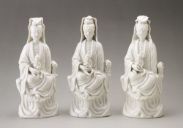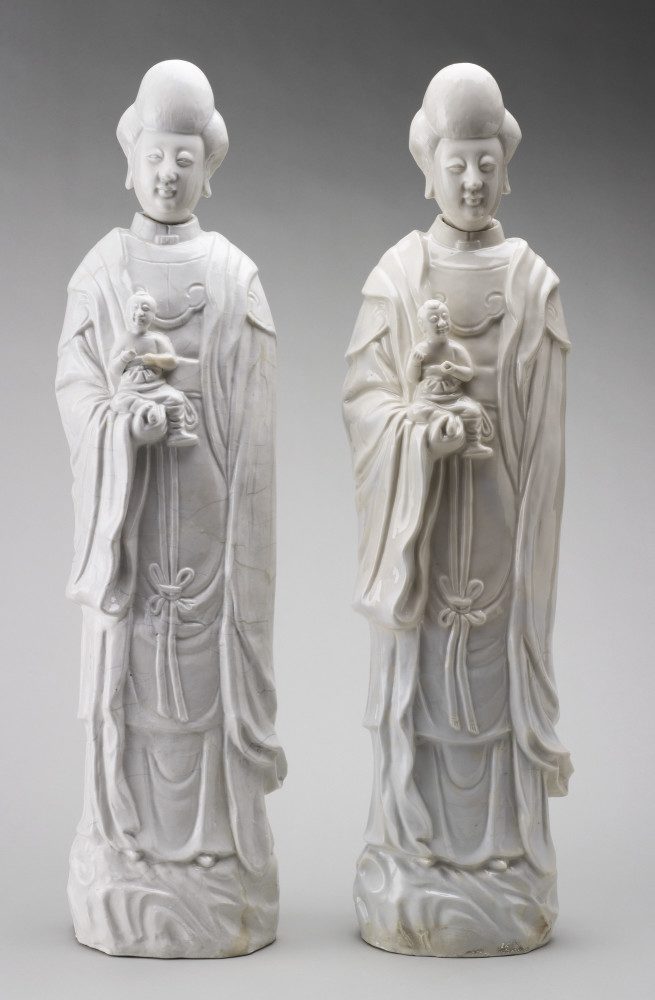Guanyin's baby boy
She holds a baby boy in her lap as a symbol of her function as maternal intercessor.
In 1556, a Dominican friar visited a temple in Canton and paid reverence to a statue of Guanyin holding a baby boy, comparing it to the image of the Holy Mother made by ancient Christians.[Cf, p 42] Guanyin and Virgin Mary were often blended together in the late Ming Dynasty since both share similarities in terms of iconography and characteristics resembling each other through features such as compassion, mercy and fertility. The indigenous beliefs of the Guanyin cult set a favorable environment for the introduction of the Marian cult in China. Jesuit missionaries therefore made great effort in associating Guanyin with the Virgin Mary to foster the spread of Christianity within Chinese culture.
The statues also made their way to Kyushu in Japan as Mary-Guanyin for secretive religious activities of Japanese Christians during a period when Christianity was forbidden in Japan. Japanese Christianity had been banned by the Bakufu government in the early 15th century leading to the persecution and expulsion of foreign missionaries. Many Christians turned to underground practices by enrolling in local Buddhist temples and secretly retaining their Christian devotion.[Cf] The Son-bringing Kannon (Songzi Guanyin) with its resemblance to the Virgin Mary and the Christ Child provided an appropriate iconic device for camouflaging true religious identities. The use of Buddhist icons as substitutes of the Catholic ones prompted the conflation of Catholicism and Pure Land Buddhism.




